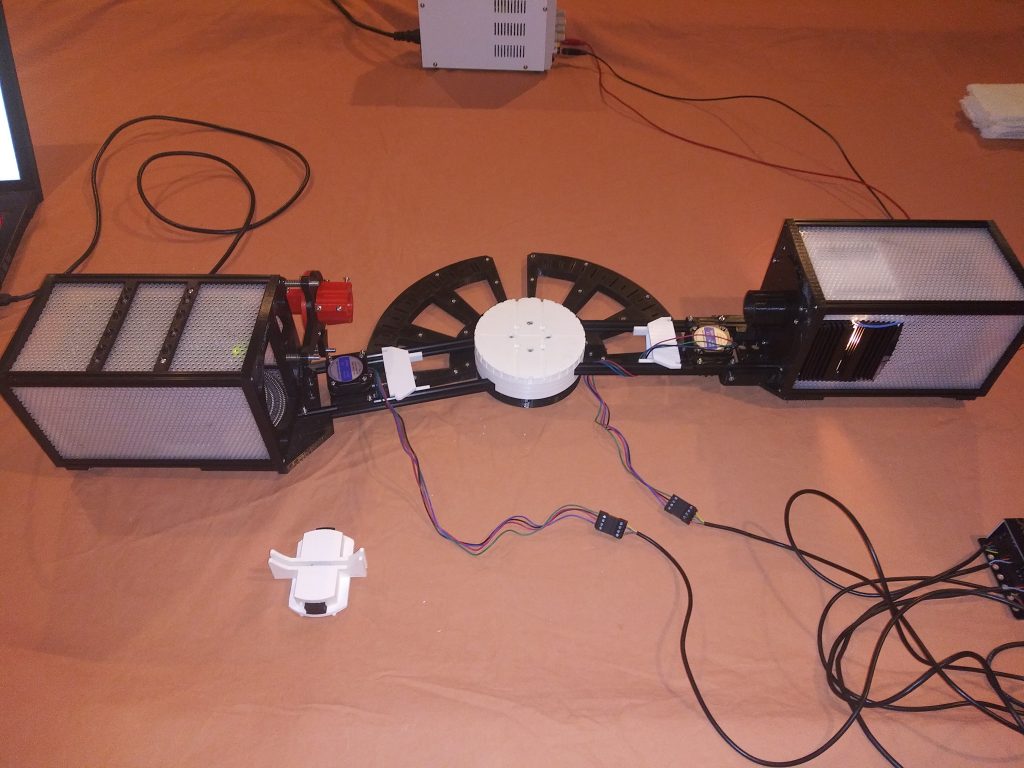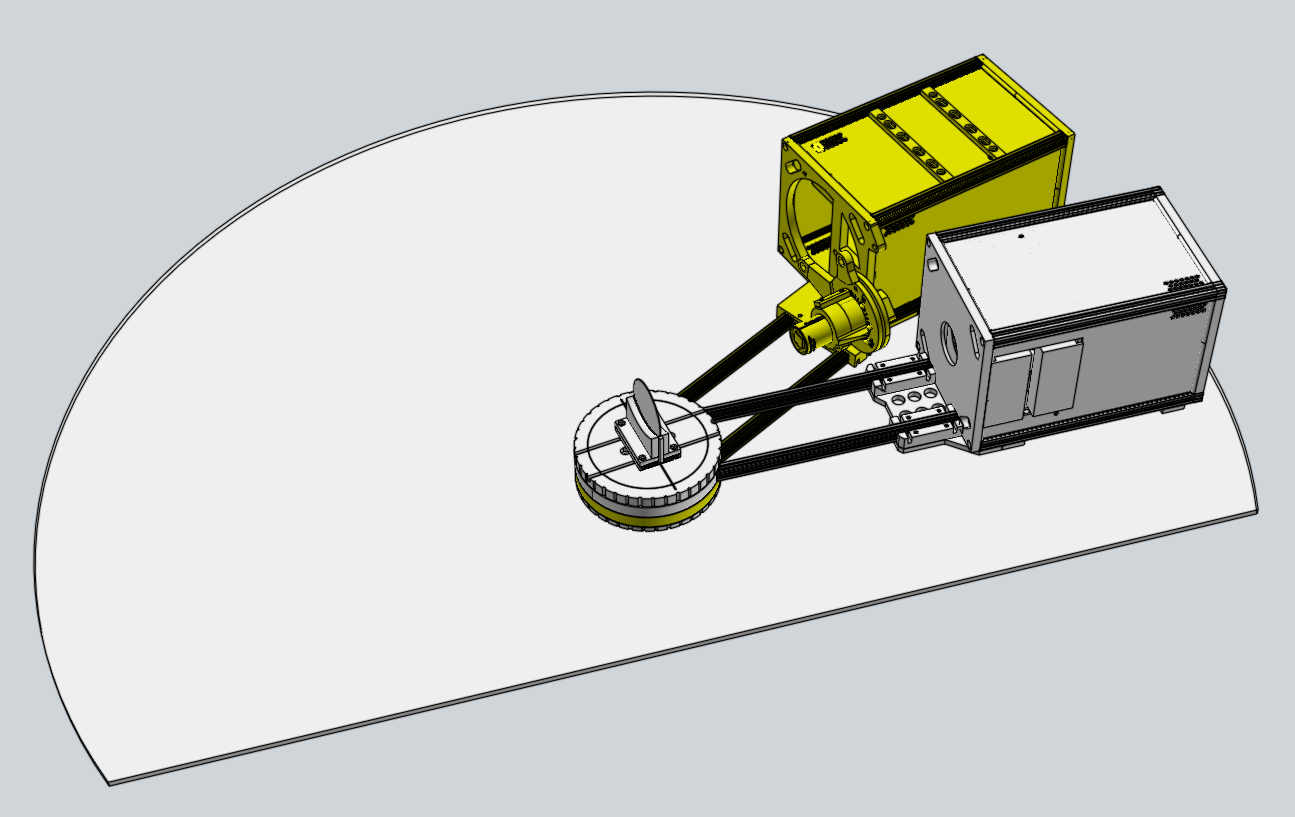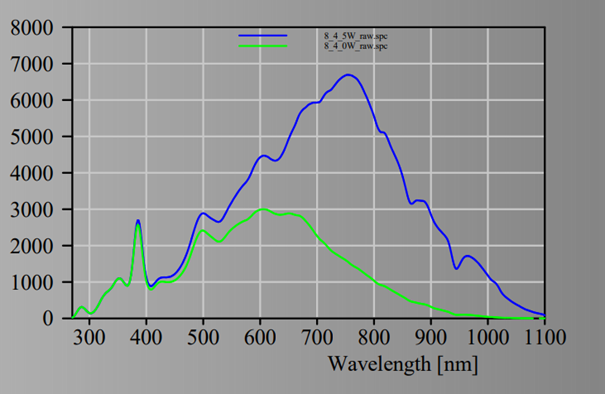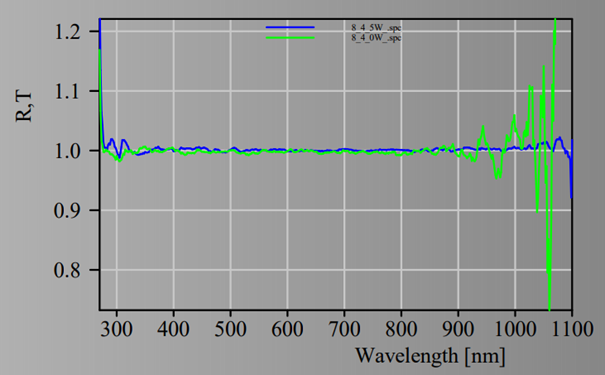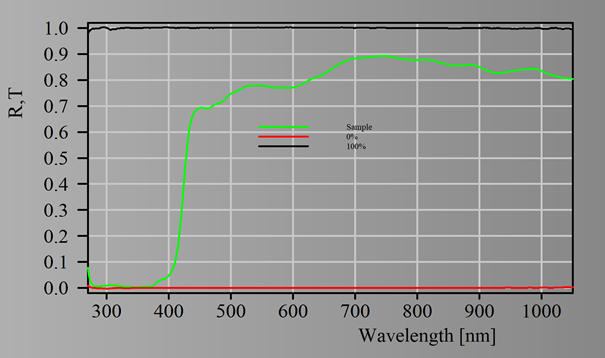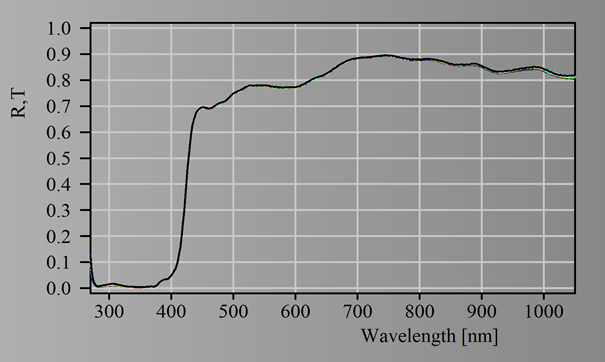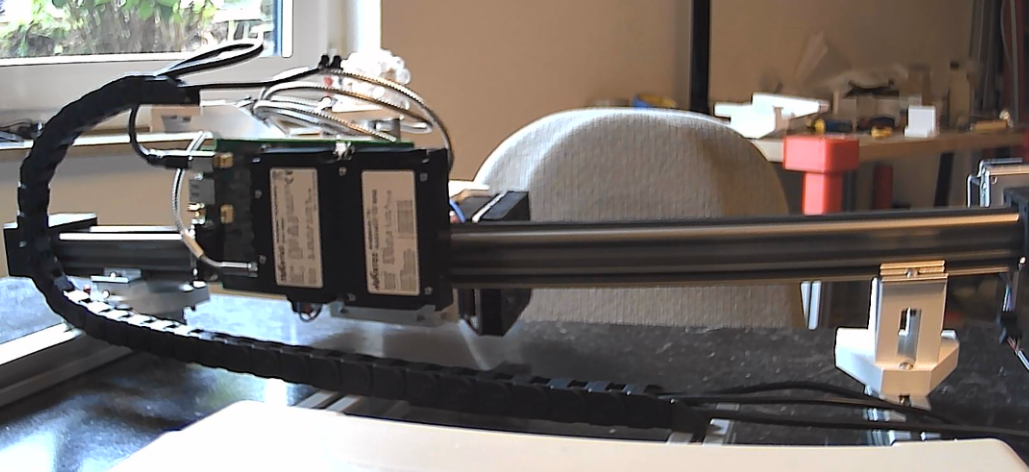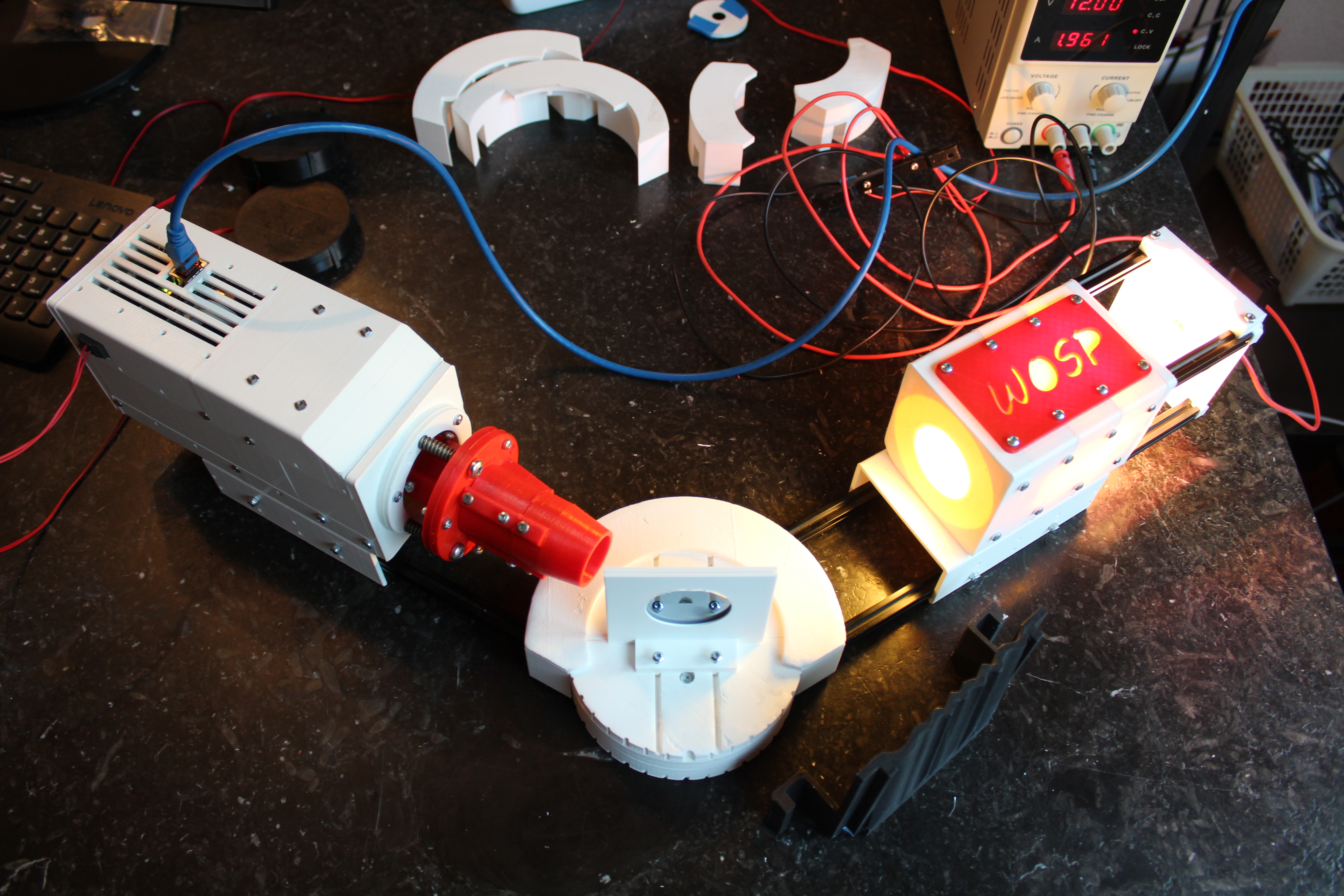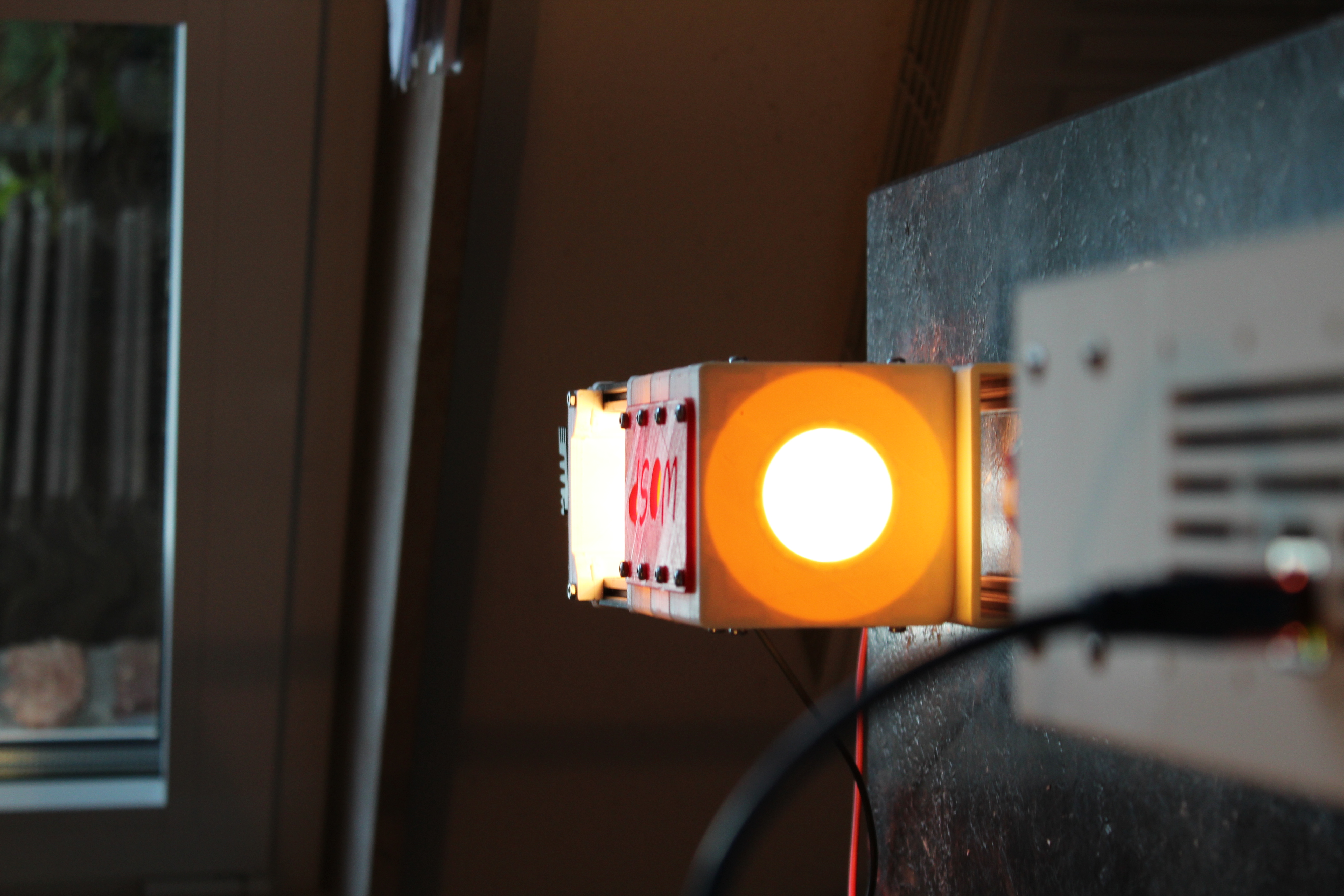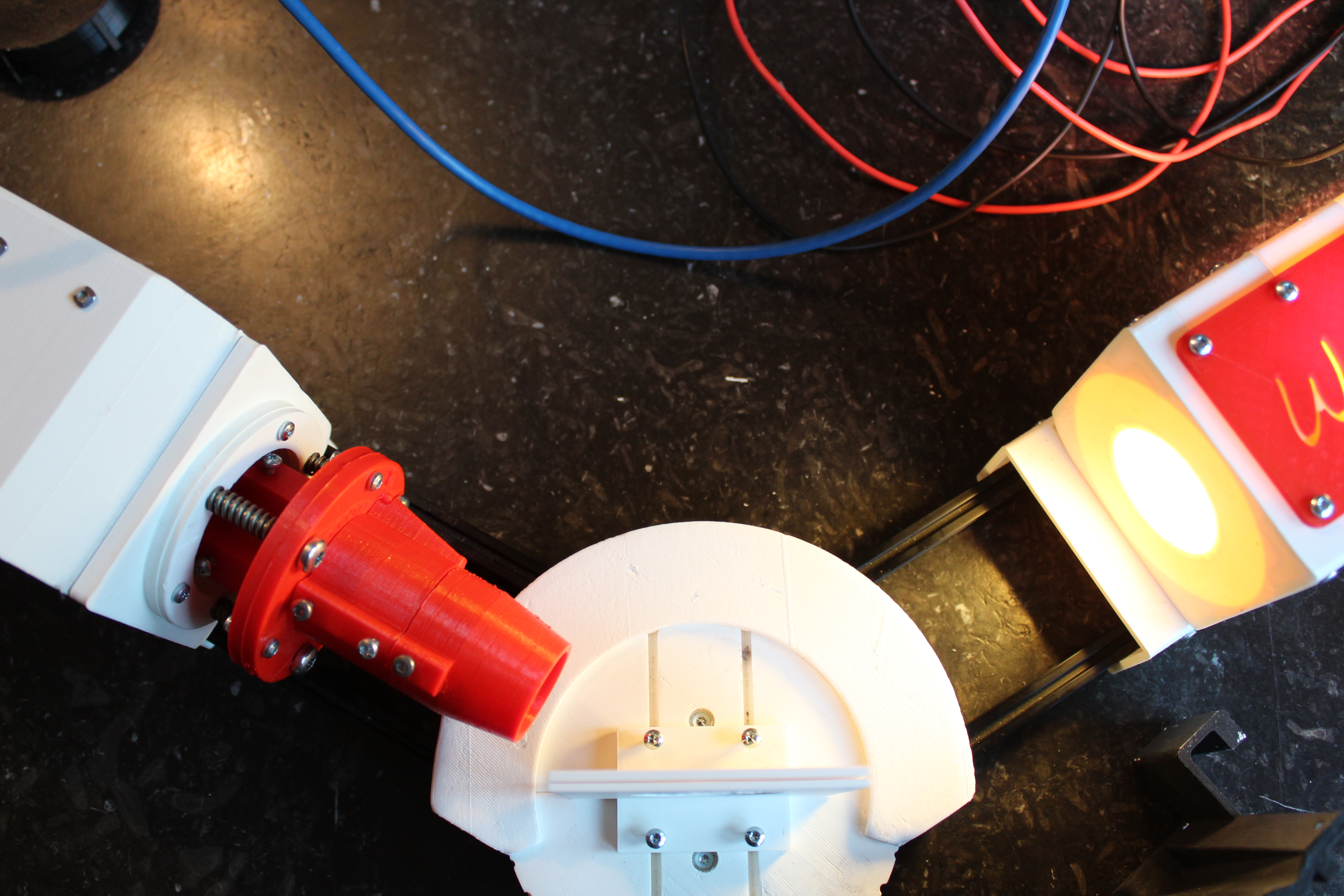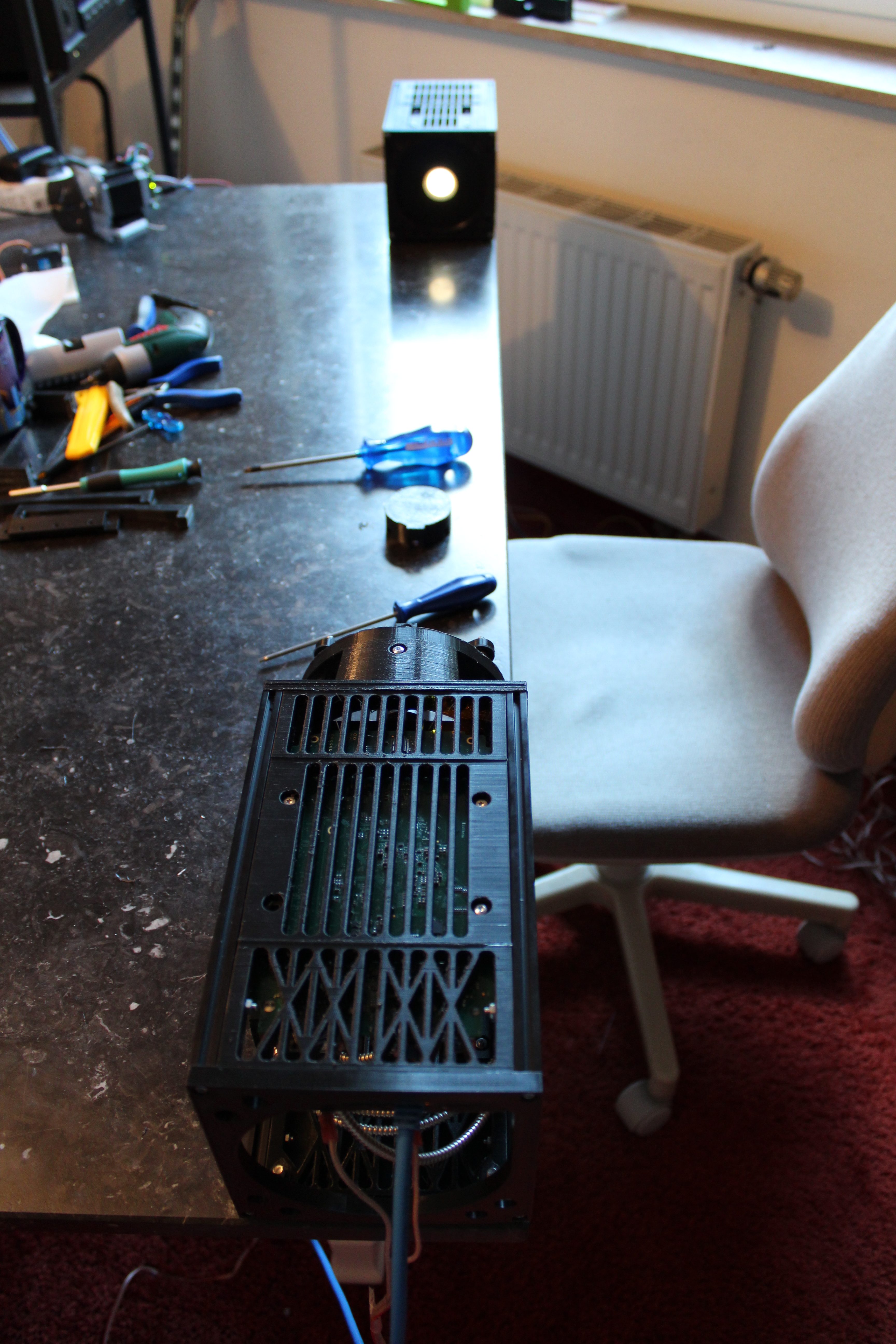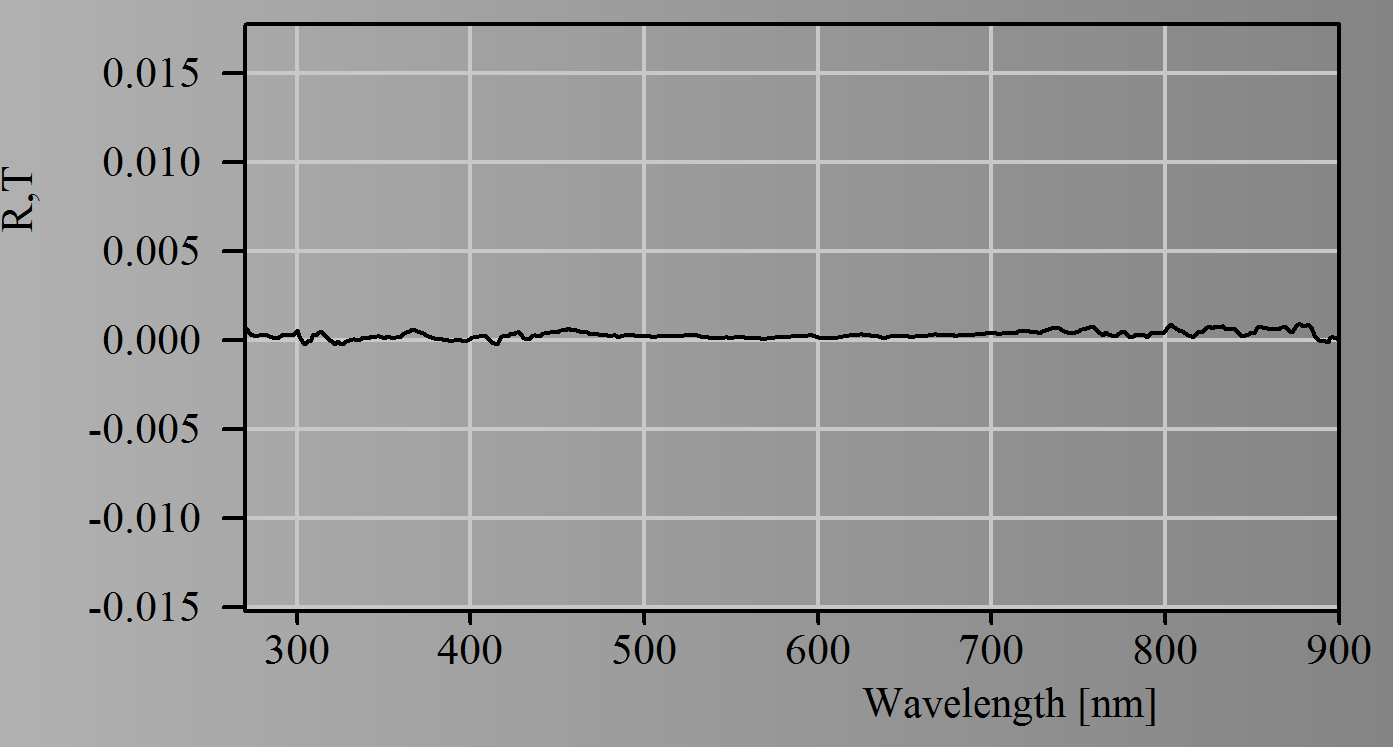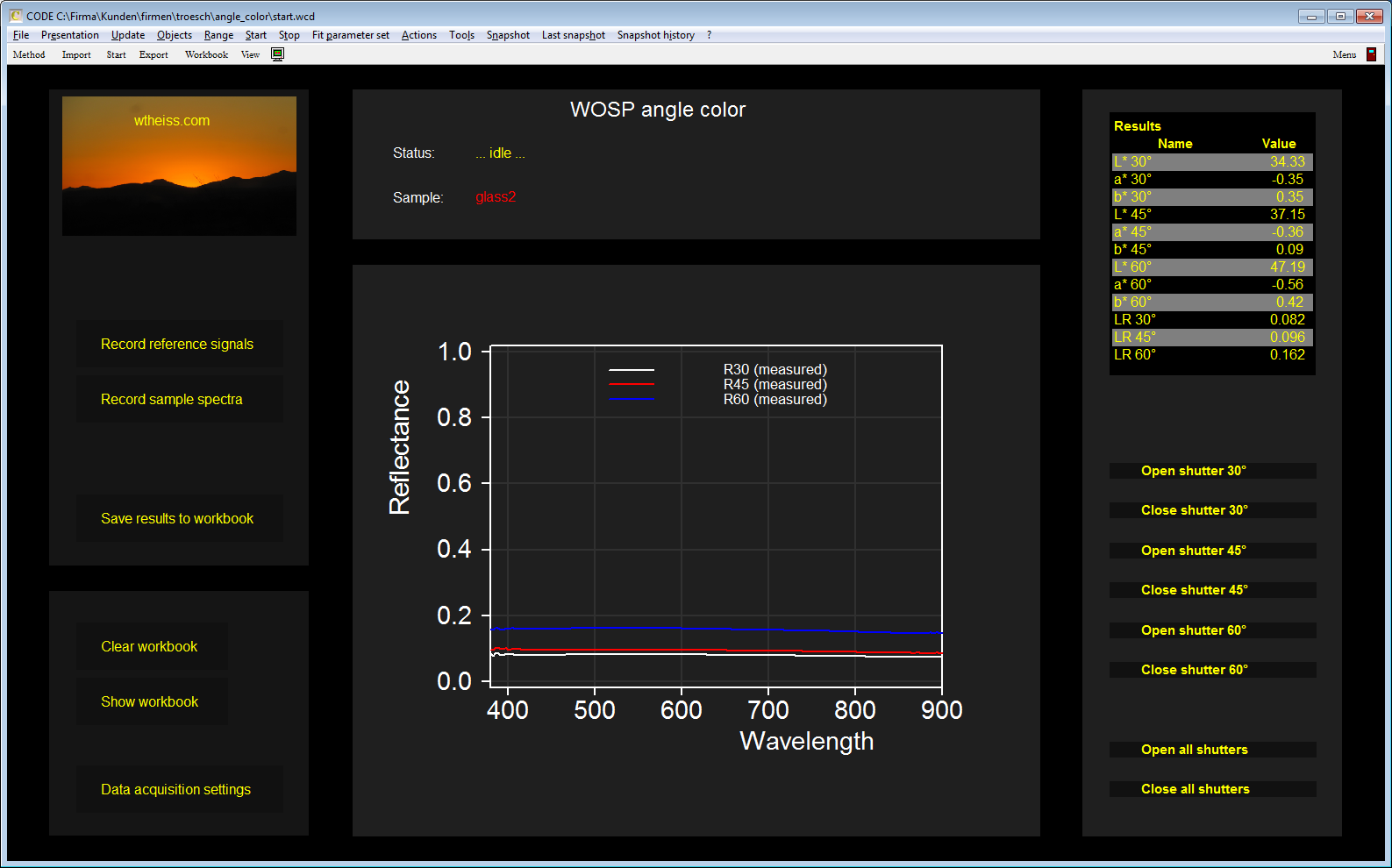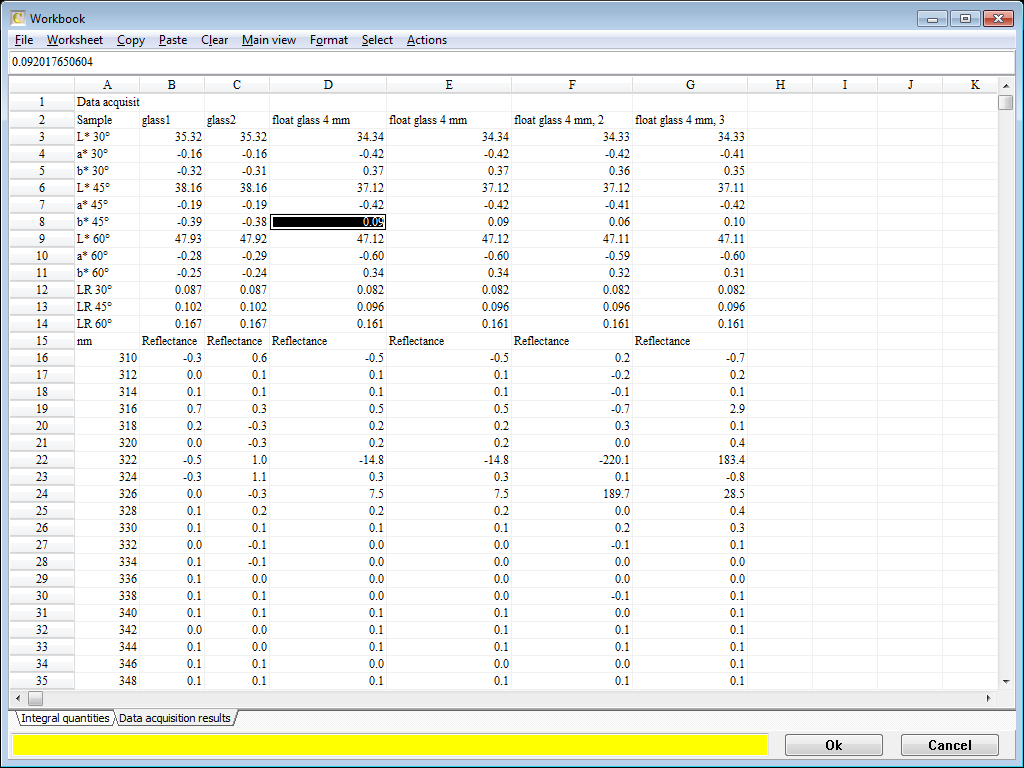The new version of WOSP-RT-DESKTOP has been tested and we think it is our best product for thin film analysis so far. Read the details here.
Category Archives: Hardware
WOSP-DESKTOP-RT system improved
Our desktop system for absolute R and T measurements has been modified: You can now use a combination of the WOSP-LEDO-P light source and an Avantes spectrometer to record spectra in the range 270 … 1050 nm. A polarizer is an optional add-on.
The system needs a table of dimensions 1000 mm * 700 mm or larger (table not included in the system). The new design allows reflectance measurements at 8° angle of incidence which was not possible with the previous version.
WOSP-LEDO-P
Following customer demands we have added a small halogen light source to the LEDO system. This enhances the intensity at the NIR end of the spectrum. Although in this case the light source is not based on LEDs alone we still call it LEDO (actually: LEDO-P): The built-in halogen bulb has an average lifetime of 20,000 hours which is in the range of the expected LED lifetime.
There is a strong increase in counts in the NIR range due to the halogen lamp (blue vs. green in the graph below):
Consequently, the NIR noise is reduced and we can extend the useful spectral range up to 1050 nm (100% line, measurements have been done with an Avantes EVO spectrometer):
Spectra taken with the new light source (200 ms integration time, 25 averages, 5 seconds total measuring time):
Stability in time: The graph below shows 25 sample spectra taken during a period of 3 minutes:
Optics in motion
Sometimes it is useful to move optical components. Scanning a sample in one or two directions can show gradients of thin film properties. Or you may be forced to move a spectrometer system to a calibration position.
With upcoming 3D printers, low cost CNC machines and laser cutters for private use, moving things has become rather cheap. Motion controllers based on Arduino boards can drive payloads at very low costs. Nevertheless, position errors are significantly below one mm which is sufficient for macroscopic optical measurements.
GRBL is the language to talk to Arduino controllers. We have integrated GRBL into SCOUT and CODE to simplify the combination of optical measurements and mechanical motion. You can use script commands to move equipment in up to 3 dimensions and take measurements at any wanted position. This opens up the route to fully automated measurement systems.
WOSP-MAC, color measurement at multiple angles
Glass for buildings and cars may have different appearance with respect to color when the viewing angle changes. The angular dependence of color values is important for the design of glass coatings, and hence it is important to verify that the wanted color values are obtained after coating deposition.
The WOSP multiple angle color sensor is a lab instrument that measures color values at fixed angles of incidence of 8°, 35°, 55° and 65° in reflectance. Transmittance measurements at these angles are possible as well.
Glass samples with a width of up to 600 mm are placed on a sample stage that slides into the measurement cabinet.
Measurements can be performed using a very simple software interface – they take about 10 seconds. Results for various samples are collected in a workbook which can be exported as Excel document. In addition, results (measured spectra and related integral quantities) are stored in a JSON file for each sample.
Polarizer for R and T measurements
We have added a polarizer to our desktop R and T measurement system. The same polarizer can be used for all systems recording R and T for shiny, non-scattering samples.
The desktop system records the 100% signal when detector and light source are positioned directly opposite to each other:
After this measurement you can do absolute reflectance measurements at arbitrary angles of incidence. We have generated tools to conveniently set fixed angles of incidence – here we have used 45° and 60°.
The graph below shows 4 absolute spectra of a silicon wafer (45°, 60°, s- and p-polarization). We could achieve almost perfect match of simulated spectra based on literature data of the optical constants, fitting a thickness of 6.2 nm of the native SiO2 layer on the wafer. Data acquisition for each spectrum took less than 1 second (averaging 18 spectra using an integration time of 50 ms).
WOSP-UVIS
Based on the WOSP-LEDO light source we have developed a spectrometer system that can be used to measure reflectance spectra in the wavelength range 270 … 900 nm. The light source is based on LEDs only.
2 array spectrometers (not shown in the images) are used to record the sample signal and a reference signal at the same time. This makes the results independent of light source drifts.
Samples must be positioned within a few mm distance to the sample port of the system. The measured spectra are tolerant against small sample tilts or height differences.
Spectral quality is the same as for WOSP-LEDO. The unit can be used as a light source for transmittance measurements as well.
The system requires an external power supply of 12 V DC.
WOSP-LEDO – a new UV-Vis light source based on LEDs only
Our new WOSP-LEDO light source generates a homogeneous area of light emission, covering the spectral range 270 … 900 nm. It uses LEDs only – small power, long lifetime.
You can point a collimated field of view of an array spectrometer to the center of the light source and record transmittance or reflectance spectra in lab quality, within a fraction of the time a lab instrument would need.
The following transmittance spectra (100%, 0%, Schott Borofloat glass) have been recorded in less than 1 second, with a distance of about 1 m between light source and detector: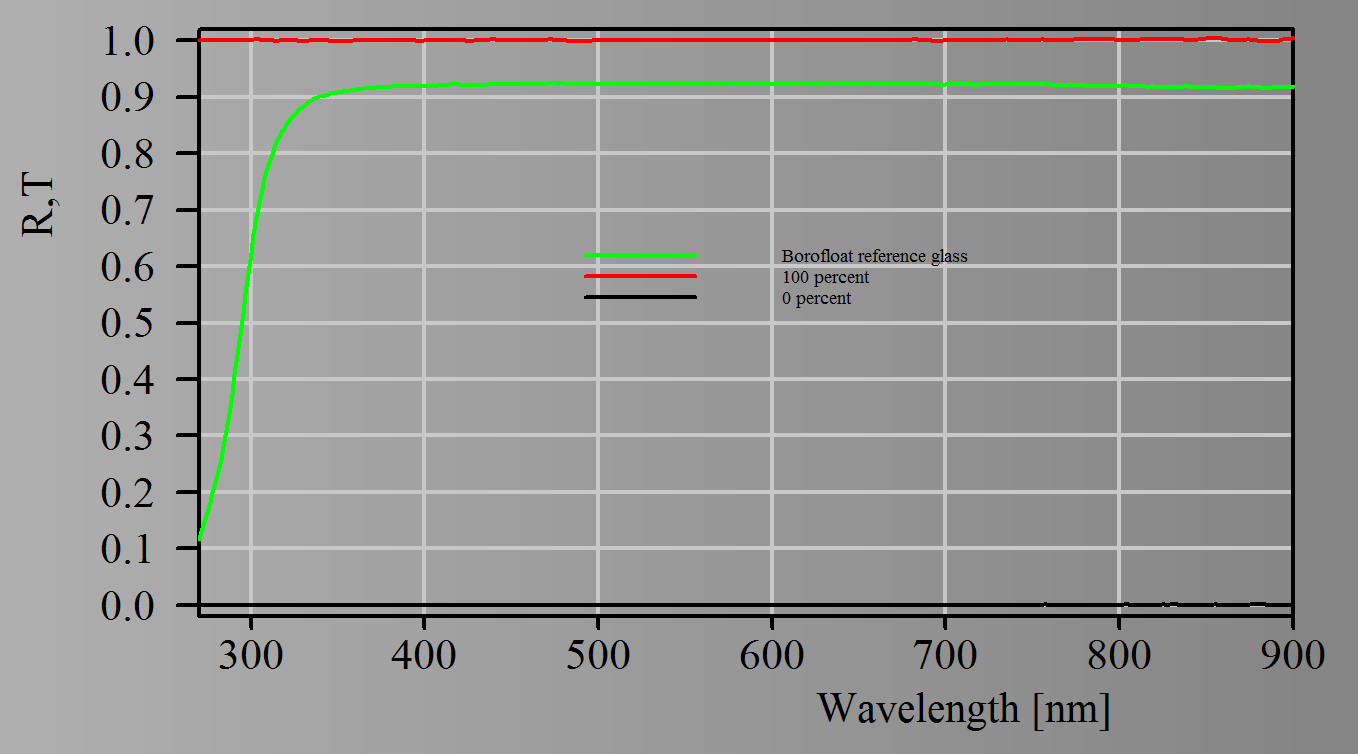
Zooms into the 0 and 100 percent spectra show excellent spectral quality:
WOSP-NOLAB
Based on WOSP-SUNBLOCK, the WOSP-NOLAB system can be used in glass factories to measure solar reflectance and transmittance (300 … 2500 nm) of large pieces of glass. Total measurement time is about 5 s.
The CODE software used for data acquisition can predict the technical performance data (color, g-value, solar R and T) of arbitrary final glazing products built with the just produced coated pane. All data (spectra, measured and predicted performance data) can be automatically exported to an external SQL database.
WOSP-MAC
Multiple angle reflectance measurements
Glass for buildings and cars may have different appearance with respect to color when the viewing angle changes. The angular dependence of color values is important for the design of glass coatings, and hence it is important to verify that the wanted color values are obtained after coating deposition.
WOSP-MAC (multiple angle color sensor) is a lab instrument that measures color values at fixed angles of incidence of 30°, 45° and 60°.
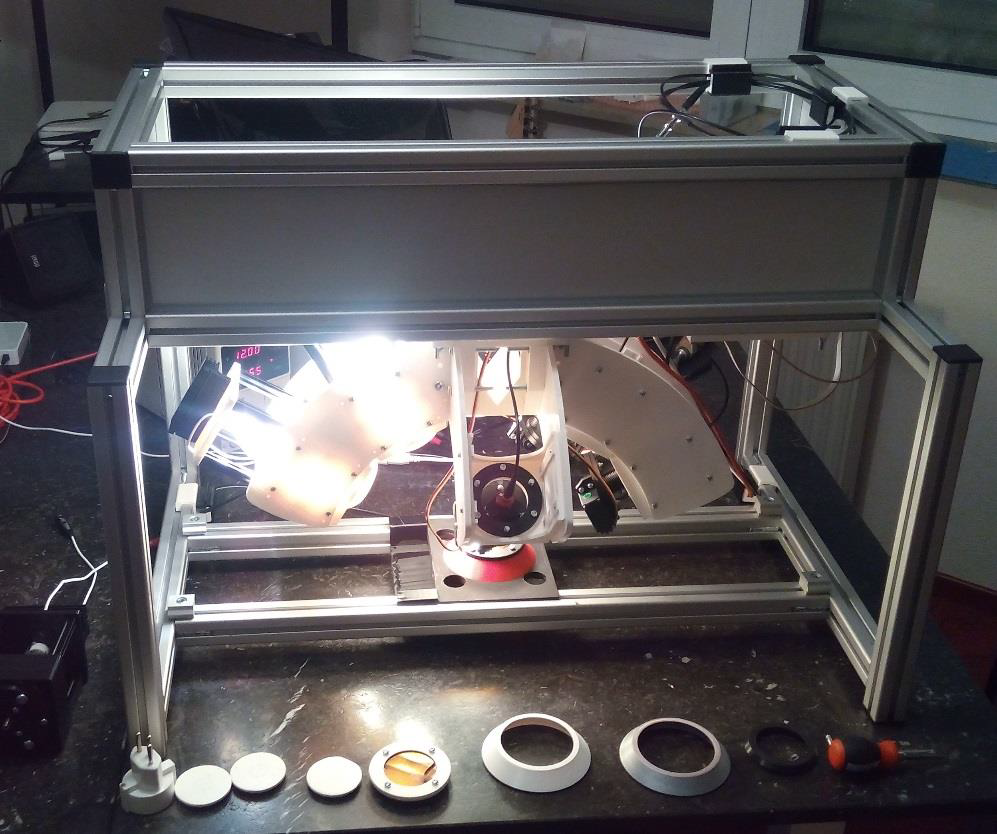
Measurements can be performed using a very simple software interface – they take about 10 seconds.
Results for various samples are collected in a workbook which can be exported as Excel document.

